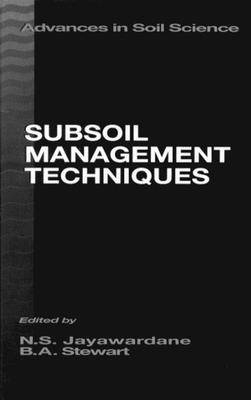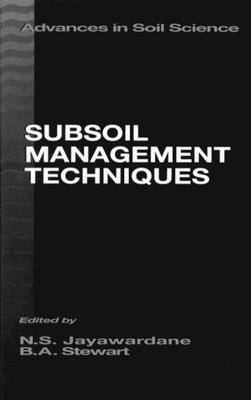
- Afhalen na 1 uur in een winkel met voorraad
- Gratis thuislevering in België vanaf € 30
- Ruim aanbod met 7 miljoen producten
- Afhalen na 1 uur in een winkel met voorraad
- Gratis thuislevering in België vanaf € 30
- Ruim aanbod met 7 miljoen producten
Zoeken
Omschrijving
The principles and practice of deep tillage techniques have often failed to provide long-term, sustainable improvements of the soil for crop production. The book reviews alternative approaches to overcoming subsoil problems. These approaches involve reduced disturbance of the soil, but still provide substantial and sustainable soil improvements.
Chapters 1 through 4 discuss the use of minimum tillage, bed farming, mole drainage, and slotting to overcome adverse subsoil conditions. Chapter 5 examines the options available for management of subsoil acidity. The next chapter provides an understanding of the processes involved in stress transmission and compaction under farm trafficking. The last chapter explains the critical role of soil microorganisms in providing long-term biological stabilization and improvements of soil. This reference brings together the latest research information on these subsoil amelioration techniques.
Chapters 1 through 4 discuss the use of minimum tillage, bed farming, mole drainage, and slotting to overcome adverse subsoil conditions. Chapter 5 examines the options available for management of subsoil acidity. The next chapter provides an understanding of the processes involved in stress transmission and compaction under farm trafficking. The last chapter explains the critical role of soil microorganisms in providing long-term biological stabilization and improvements of soil. This reference brings together the latest research information on these subsoil amelioration techniques.
Specificaties
Betrokkenen
- Auteur(s):
- Uitgeverij:
Inhoud
- Aantal bladzijden:
- 256
- Taal:
- Engels
- Reeks:
Eigenschappen
- Productcode (EAN):
- 9781566700207
- Verschijningsdatum:
- 12/10/1994
- Uitvoering:
- Hardcover
- Formaat:
- Genaaid
- Afmetingen:
- 151 mm x 241 mm
- Gewicht:
- 449 g

Alleen bij Standaard Boekhandel
+ 600 punten op je klantenkaart van Standaard Boekhandel
Beoordelingen
We publiceren alleen reviews die voldoen aan de voorwaarden voor reviews. Bekijk onze voorwaarden voor reviews.











